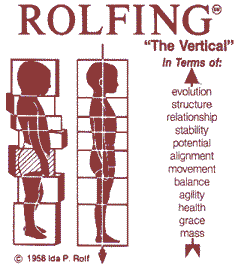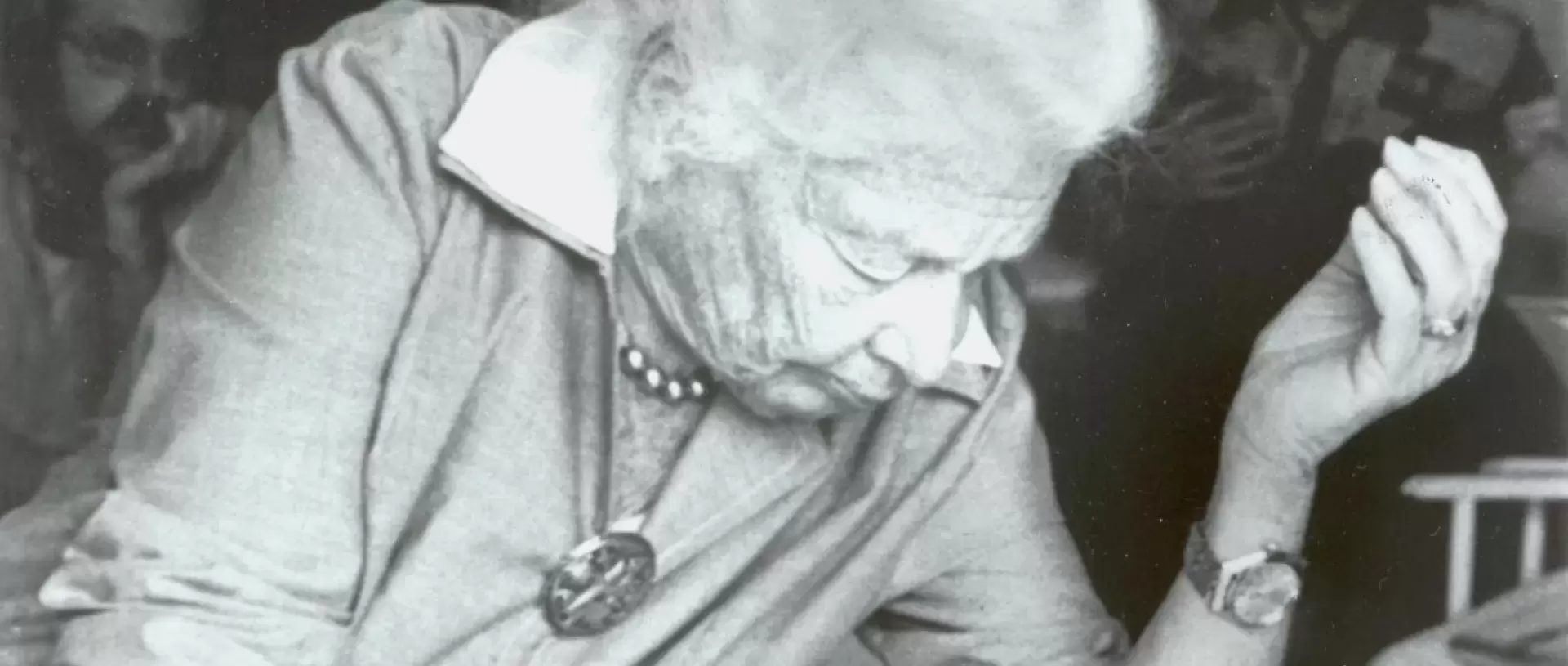Dr. Ida Rolf, Ph.D. spent her life exploring the healing potential held within the human body.
Dr. Ida Rolf's Studies
Dr. Rolf (1896 – 1979) earned her Ph.D. in biochemistry from the College of Physicians and Surgeons of Columbia University in 1920. During the following 12 years, she worked at The Rockefeller Institute in the Department of Chemotherapy and later in the Department of Organic Chemistry. During her time at the Institute, she took a leave of absence to study mathematics and atomic physics at the Swiss Technical Institute in Zurich. Interestingly, this university is one of the top technical schools in the world, with 31 Nobel Prize winners including Albert Einstein among its graduates. While in Zurich, she also took the opportunity to study homeopathic medicine during weekends in Geneva.
Exploring Healing Methods
Driven to find health solutions for herself and her two sons, she spent many years exploring alternative healing methods including homeopathy, osteopathy, chiropractic, yoga, the Alexander Technique, and Korzybsji’s work on states of consciousness. Throughout her explorations, Dr. Rolf was grounded firmly in the scientific point of view, but also acknowledged the value of solutions arrived at through intuition.
She observed that lasting improvement and overall sense of well-being required examining the effects of gravity on our bodies. She believed that imbalances in structure placed demands on the body’s pervasive soft tissue network – muscles, fascia, tendons and ligaments, creating compensations throughout the body structure.
Development of Rolfing® Structural Integration
Dr. Rolf asked a fundamental question:
What conditions must be fulfilled for the human body’s structure to be organized and integrated in gravity so that the whole person can function in the most optimal and economical way?
Answering this question became the central theme to her life’s work, and led to the founding of the system of soft tissue manipulation and movement education called Rolfing® Structural Integration. One of her greatest contributions to the field of bodywork was the discovery that gravity, as an organizing element, is uniquely important for body structure, movement coordination, spatial perception and human expression.
To pass along her work to others and make the education process accessible, she developed a series of ten sessions now called the 10-Series. She also coined the term Structural Integration to define her new methodology. It is only in later years, that her name has become synonymous with the methodology and process now more widely known as Rolfing Structural Integration.
Dr. Ida Rolf's Legacy
Since her death in 1979 at the age of 83, The Rolf Institute® of Structural Integration and its affiliated organizations including the European Rolfing® Association e.V. have continued to share her work by certifying Rolfers® and Rolf Movement™ Practitioners, supporting research, and building upon her inspiration.
Dr. Rolf left behind a vital method applied by more than 2200 Rolfers worldwide, and she continues to be recognized today, as a pioneering leader in the fields of soft tissue manipulation and movement education. Dr. Rolf’s profound inquiry into how to enhance the whole person by organizing the body in gravity has inspired generations of bodyworkers around the world.
Rolfing Structural Integration is continously developed further. More information on Scientific Research.
History of the Logo
 The Rolf Institute Logo depicts the extraordinary story of a four-year-old boy, Tim Barrett (later: Tim Law), who was diagnosed with Leggs-Perthes disease in 1959. Tim’s mother was advised by doctors to put him in a cast for five years, and it was predicted he would be in a wheelchair by the age of 20. Dr. Ida Rolf believed she could help Tim without having to put him into a cast. She worked on him for several months and he grew up without any handicaps, and even became a healthy, active surfer in his forties. Tim Law lived with his family in Hawaii.
The Rolf Institute Logo depicts the extraordinary story of a four-year-old boy, Tim Barrett (later: Tim Law), who was diagnosed with Leggs-Perthes disease in 1959. Tim’s mother was advised by doctors to put him in a cast for five years, and it was predicted he would be in a wheelchair by the age of 20. Dr. Ida Rolf believed she could help Tim without having to put him into a cast. She worked on him for several months and he grew up without any handicaps, and even became a healthy, active surfer in his forties. Tim Law lived with his family in Hawaii.
Publications by Dr. Ida Rolf
Rolfing and Physical Reality – 1990, Dr. Ida Rolf
Rolfing: Reestablishing the Natural Alignment and Structural Integration of the Human Body for Vitality and Well-Being – 1989, Dr. Ida Rolf
What in the world is Rolfing?: An introduction to Structural Integration, a technique of human well-being – 1975, Dr. Ida Rolf
Rolfing: The Integration of Human Structures – 1978, Dr. Ida Rolf
More Information
Watch video on Dr. Ida Rolf.
Pictures of Ida Rolf © Ron Thompson







